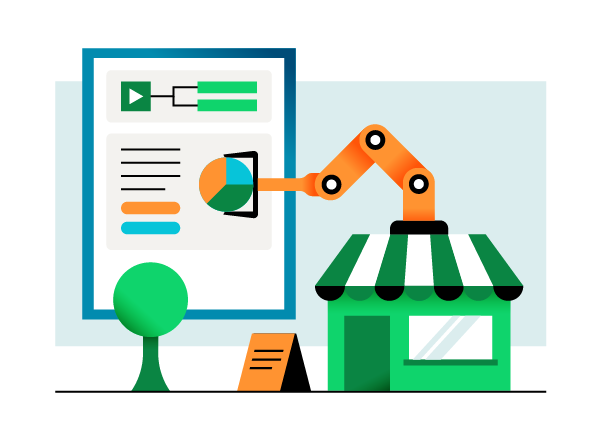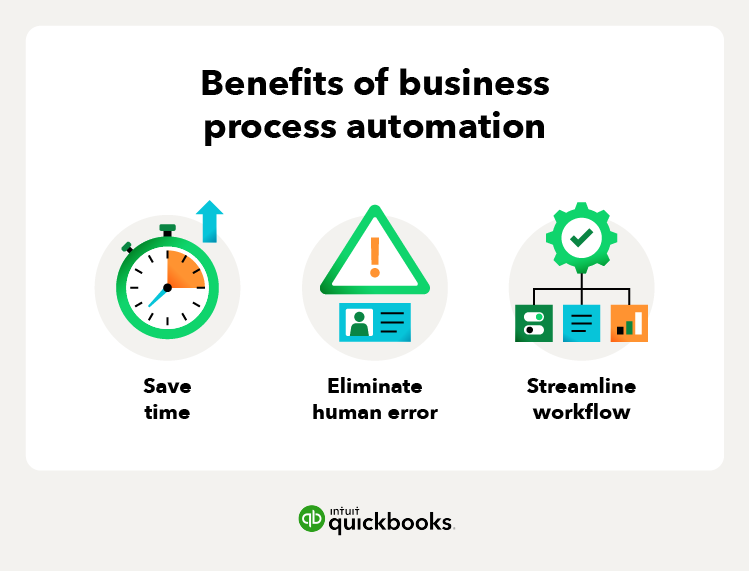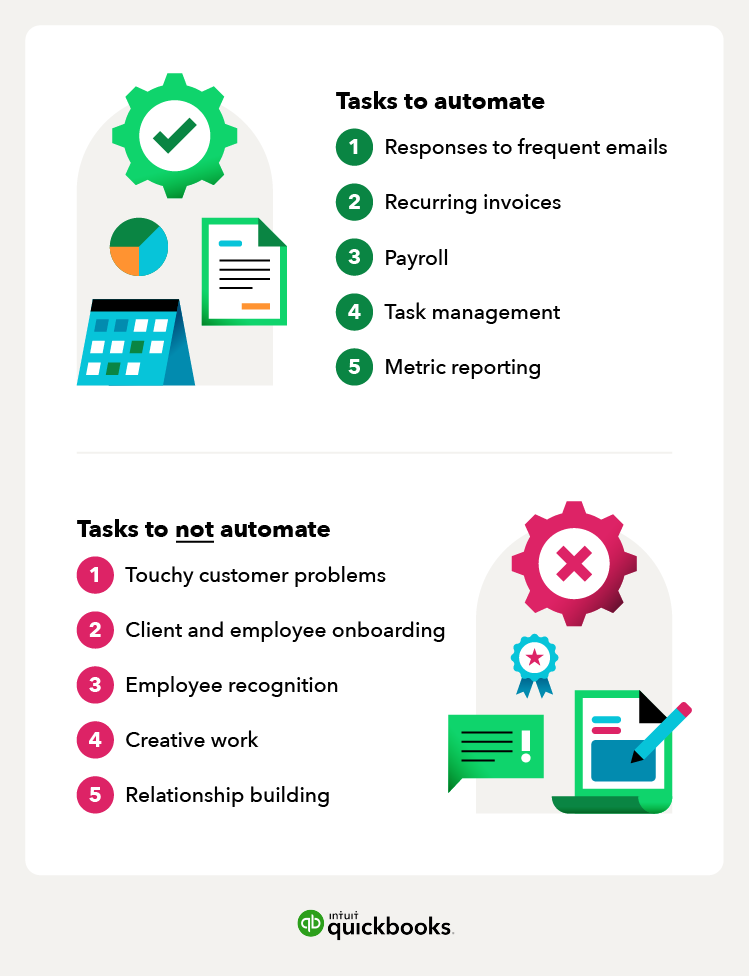Almost every business owner would love to be able to say that their company runs at peak efficiency. However, improving your business comes with time, streamlining processes, increased customer satisfaction, and digital transformation in many cases.
For many, this means incorporating business process automation (BPA) to solve for time-wasters, from menial tasks to dire pain points. Having the ability to reduce costs and increase revenue via automation is tempting for any busy small business owner, but automator beware, not every task is apt for BPA.
To help guide you on your BPA journey (or build on your existing foundation), we’ll cover the best tips for small businesses to incorporate business process automation into their company structure and reap the benefits of its outcomes.
- What is business process automation (BPA)?
- Benefits of business process automation
- Save time
- Eliminate human error
- Streamline workflow
- Examples of automated business tasks
- 5+ small business tasks to automate
- 1. Responses to frequent emails
- 2. Recurring invoices
- 3. Payroll
- 4. Task management
- 5. Reporting on metrics
- 6. Additional tasks to automate
- 5 small business tasks not to automate
- 1. Touchy customer problems
- 2. Client and employee onboarding
- 3. Employee recognition
- 4. Creative work
- 5. Building relationships
- BPA implementation tips










